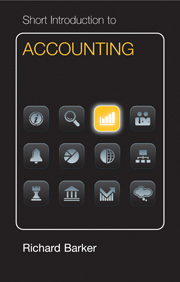Book contents
7 - Understanding risk
from Part II - Introduction to Part II
Published online by Cambridge University Press: 05 June 2014
Summary
Understanding Risk
The last two chapters have reviewed growth and profitability. A further attribute of economic performance is risk: a given level of return on capital is more desirable if it can be achieved with a lower level of risk.
Any organisation faces a variety of risks, the financial effects of which are manifested in the financial statements. If, for example, customer demand is lower than expected, or if budgets for operating expenses are exceeded, or if changes in market prices cause the value of assets to decline, then profitability will be adversely affected.
The financial statements do more, however, than simply record the financial consequences of risks. They also, to some extent, provide information about exposure to risk, and in particular whether the financial structure of the business is itself inherently risky. We have already seen, for example, that if the assets on a balance sheet are relatively liquid, then the organisation is exposed to fewer risks, because the assets can more readily be diverted to alternative use if such need arises unexpectedly.
- Type
- Chapter
- Information
- Short Introduction to Accounting , pp. 111 - 127Publisher: Cambridge University PressPrint publication year: 2011



